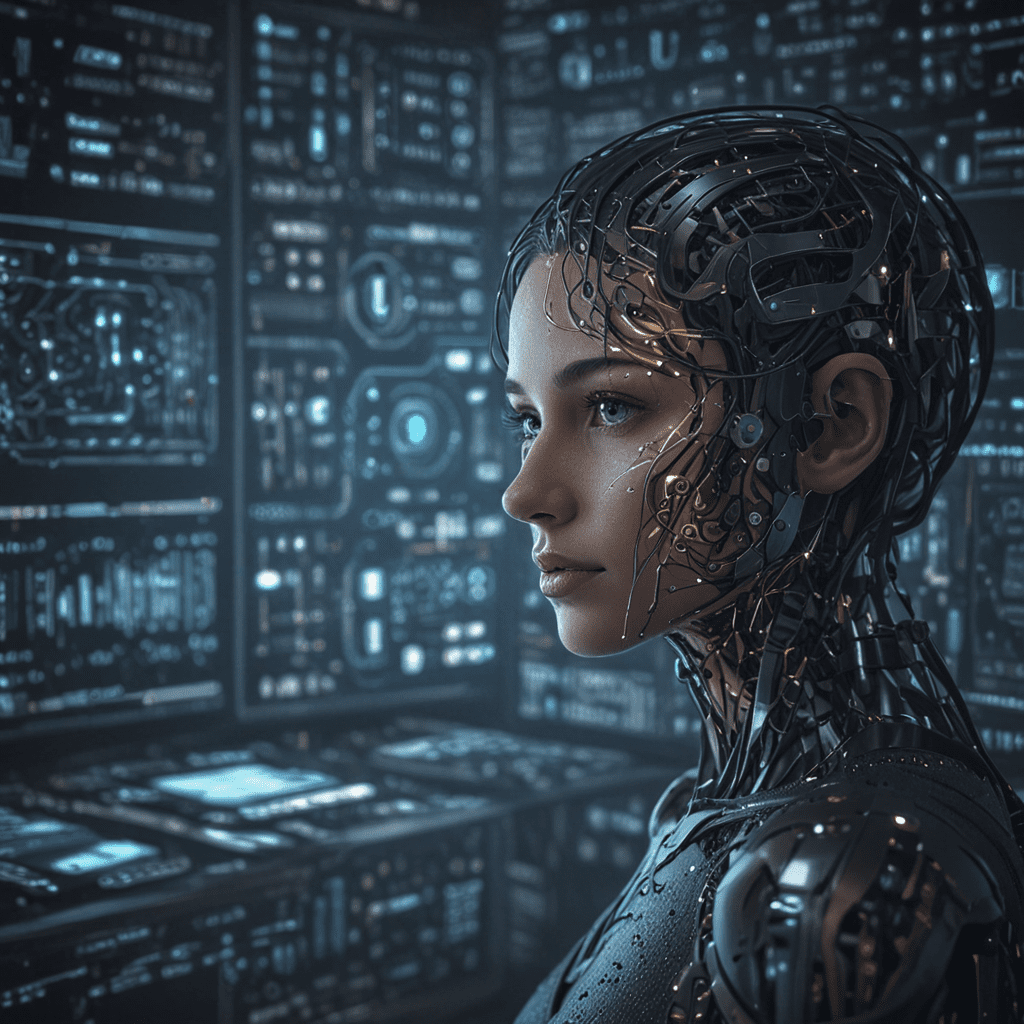The Convergence of Machine Learning (ML) and User Experience (UX)
In the rapidly evolving technological landscape, the convergence of Machine Learning (ML) and User Experience (UX) has emerged as a transformative force. By harnessing the power of ML algorithms, UX designers can create intuitive, personalized, and engaging user experiences that seamlessly adapt to individual preferences and contexts. This convergence has profound implications for the future of UX design, paving the way for groundbreaking advancements that enhance user satisfaction and drive business outcomes.
The Role of ML in Enhancing User Engagement and Personalization
ML empowers UX designers with the ability to analyze vast amounts of user data, including behavior patterns, preferences, and feedback. These insights enable designers to tailor user interfaces and interactions to meet the specific needs of each individual. By leveraging ML algorithms, UX designers can create personalized experiences that resonate with users on a deeper level, increasing engagement and fostering long-term loyalty.
AI-Driven User Research and Analytics
ML is revolutionizing the way UX designers conduct user research and gather user feedback. AI-powered tools can automate data collection and analysis, allowing designers to gain deeper insights into user behavior and motivations. By leveraging natural language processing (NLP) and sentiment analysis, ML algorithms can extract meaningful insights from user surveys, reviews, and social media interactions. This data-driven approach enables UX designers to make informed decisions based on a comprehensive understanding of user needs and preferences.
Predictive Modeling and Adaptive UX Design
Predictive modeling is a powerful ML technique that allows UX designers to anticipate user behavior and preferences. By analyzing historical data and identifying patterns, ML algorithms can generate predictions about how users will interact with a product or service. This information can be used to create adaptive UX designs that automatically adjust to the user's context, preferences, and device. Predictive modeling empowers UX designers to create experiences that are intuitive, efficient, and tailored to individual needs.
Natural Language Processing (NLP) for Seamless Interactions
NLP is a branch of ML that enables computers to understand and process human language. By incorporating NLP into UX design, designers can create conversational interfaces that allow users to interact with products and services in a natural and intuitive way. NLP-powered chatbots, virtual assistants, and voice-based interfaces provide users with a seamless and efficient means of interacting with technology, enhancing overall user satisfaction and engagement.
Computer Vision for Intuitive Image and Object Recognition
Computer vision is a field of ML that enables computers to "see" and interpret images and objects. By incorporating computer vision into UX design, designers can create interfaces that seamlessly recognize and respond to user gestures, facial expressions, and objects in the physical world. This technology empowers UX designers to develop innovative and immersive experiences that leverage the power of sight, enhancing user engagement and accessibility.
Ethical Considerations and Responsible ML in UX Design
As ML becomes increasingly prevalent in UX design, it is crucial to address ethical considerations and ensure responsible use of this technology. UX designers must prioritize user privacy, transparency, and fairness in their applications of ML. This involves obtaining informed consent from users, providing clear explanations of how their data is being used, and mitigating potential biases that could lead to discriminatory outcomes. By embracing ethical principles, UX designers can foster trust and ensure that ML-powered experiences are beneficial and just for all users.
The Impact of ML on UX Team Structure and Collaboration
The integration of ML into UX design calls for a re-evaluation of team structures and collaboration models. UX designers may need to collaborate with data scientists and ML engineers to effectively leverage this technology. This interdisciplinary approach requires open communication, mutual understanding, and a shared commitment to creating user-centric experiences. By fostering collaboration and embracing diverse perspectives, UX teams can harness the full potential of ML to deliver exceptional user experiences.
Emerging Trends in ML-Powered UX
The future of ML-powered UX holds exciting possibilities. Emerging trends include the use of generative AI to create personalized content and experiences, the application of affective computing to sense and respond to user emotions, and the development of biometrics-based interfaces for more seamless and secure interactions. As ML continues to advance, UX designers will have access to a growing arsenal of tools and techniques to create transformative and intuitive user experiences.
The Future of UX Design: Integration and Innovation at the Edge of ML and Human-Computer Interaction
The future of UX design lies at the intersection of ML and human-computer interaction (HCI). By harnessing the power of ML and embracing a human-centered approach, UX designers can create experiences that are not only technologically advanced but also deeply empathetic and intuitive. This integration will lead to seamless and adaptive interfaces that enhance productivity, improve accessibility, and foster meaningful connections between users and technology. The future of UX design is bright, driven by the boundless possibilities of ML and the unwavering commitment to creating user-centric experiences.
Frequently Asked Questions (FAQs)
Q: How does ML aid in improving user engagement?
A: ML algorithms analyze user data to identify preferences and patterns, enabling UX designers to tailor personalized experiences that resonate with users, increasing engagement and fostering loyalty.
Q: How does AI assist in user research and analytics?
A: AI-powered tools automate data collection and analysis, allowing UX designers to gain deeper insights into user behavior and motivations through NLP, sentiment analysis, and other techniques.
Q: What benefits does computer vision offer in UX design?
A: Computer vision enables interfaces to recognize and respond to user gestures, facial expressions, and objects, creating immersive experiences that leverage the power of sight and enhance accessibility.
Q: How does ML impact collaboration in UX teams?
A: Integrating ML requires collaboration between UX designers, data scientists, and ML engineers, fostering open communication and mutual understanding to effectively leverage ML for user-centric experiences.

